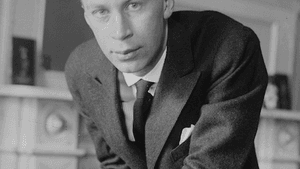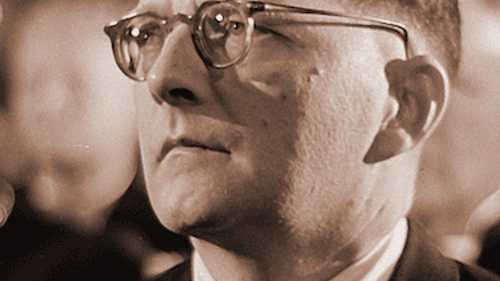Stay in the Loop
BSR publishes on a weekly schedule, with an email newsletter every Wednesday and Thursday morning. There’s no paywall, and subscribing is always free.
Russian resurrections
The Philadelphia Orchestra with Yefim Bronfman (second review)

One of the greatest piano concertos of the 20th century, and one of its greatest symphonies, performed this week by the Philadelphia Orchestra, might never have seen the light of day.
Sergei Prokofiev composed his Second Piano Concerto in 1913. He left behind his only copy of the score when he left Russia in 1918 in the wake of the Bolshevik Revolution. As the story goes, the manuscript was burned for fuel. Prokofiev went on to make a career as a composer and pianist in the west, and in 1923, looking for fresh material, he recomposed the Second from memory.
A biting concerto
It’s not only his best, but also among the century’s finest keyboard concertos. The titanic cadenza at the end of the opening movement (a facetiously designated Andantino) is as tough or tougher than the famous one in Rachmaninoff’s Third Concerto, and it is immediately succeeded by a whirlwind scherzo in which the pianist never lifts his hands from the keys from first note to last. It doesn’t get any easier from there either in the succeeding Intermezzo and the concluding Allegro tempestuoso, movements played without pause.
There’s an improvisational, mercurial feel to the concerto, as Prokofiev moves from lyric statements of deceptive simplicity to passages of dense contrapuntal dissonance, and a soloist must be alert to abrupt tonal and temperamental shifts as well as to the overall structural balance. Yefim Bronfman, a frequent and longtime collaborator with the orchestra, who produced a fine Emperor Concerto with Vladimir Jurowski last February, has this piece in his pocket, but he gave it an anything but routinized performance; this is a work that will bite back if you do. Yannick Nézet-Séguin kept the often-tricky balances going, as spare passages of accompaniment — or silence — alternate with bursts of sound and color.
The unanswered question in the Prokofiev Second is the extent to which it was not merely reconstructed but recomposed. Prokofiev kept its original numbering in his catalogue as his Second Concerto, and the original opus number, 16. Assuming the content and structure of the work to be the same, the question that remains is how the concert experience and sensibility of 32-year-old Prokofiev, who rewrote from memory, reshaped the concerto of his 10 years’ junior self. Prokofiev had a habit of revising previous scores, sometimes for better and sometimes not. In the case of the Second Concerto, we have no original version for comparison. What we do have, however, is a masterpiece.
Hidden treasure...

Lost manuscripts are one thing; suppressed ones are another. Dmitri Shostakovich was at work on his Fourth Symphony in 1935-36. It was his most ambitious orchestral score and among the most daringly Modernist. His long-running and internationally successful opera, Lady Macbeth of Mtsensk, was still on the boards in Moscow. Suddenly, in January 1936, a belated, unsigned review in Pravda attacked the opera as anti-Soviet and bourgeois.
Stalin’s Great Terror was just unfolding, and Shostakovich would soon lose friends, patrons, collaborators, and family members to it. The amazing thing about the Fourth Symphony is not that it would be shelved, but that Shostakovich was able to complete it at all in those grim and terrifying circumstances. It was actually put into rehearsal in December of 1936, but withdrawn without performance, although on whose initiative or order is unknown. However, its performance would likely have been suicidal for all concerned.
Shostakovich did not disavow the unperformed and unpublished Fourth, but kept its numbering among his symphonies and its place in his opus listing. That in itself was risky business. A reduction for two pianos was published in 1946 in what seemed a moment of relative political openness. Two years later, as Stalin’s final period of repression began with an assault on major Soviet composers (including Prokofiev, who, homesick, re-emigrated in the 1930s), even a gesture such as this would have been impossible.
...Found in Philadelphia
It was not until December 1961 — exactly a quarter century after the cancelled premiere — that it was finally performed, by the Moscow Philharmonic under Kirill Kondrashin. To Russian audiences, musically frozen in time, the Fourth would have seemed as daring as it would have been a generation before, and it was welcomed as both a political and musical statement. Shostakovich only remarked that it seemed better than some of his own more recent works. In the Cold War atmosphere, the symphony did not circulate abroad very quickly, but Eugene Ormandy, a major champion of the composer, premiered it with the Philadelphia Orchestra in February 1963, and immediately recorded it.
Even in the west, the Fourth proved difficult to assimilate. I remember vividly a performance by the New York Philharmonic under André Previn in which half the audience walked out after the half-hour opening movement. However, the audience for Thursday night’s concert not only stayed to the end, but many remained for Nézet-Séguin’s post-concert discussion, in which he confessed that this was his first-ever performance as conductor of the Fourth. For scale, pacing, intensity, and color, it was as good a realization of this fiendishly demanding score as I’ve ever heard, and one of the best performances of Nézet-Séguin’s tenure.
To read Linda Holt's review of this concert, click here.
What, When, Where
The Philadelphia Orchestra. Yefim Bronfman, piano. Yannick Nézet-Séguin, conductor. Prokofiev, Piano Concerto No. 2 in G minor, Opus 16; Shostakovich, Symphony No. 4 in C minor, Opus 43. December 1-3, 2016 at the Kimmel Center's Verizon Hall, 300 S. Broad Street, Philadelphia. (215) 893-1999 or philorch.org.
Sign up for our newsletter
All of the week's new articles, all in one place. Sign up for the free weekly BSR newsletters, and don't miss a conversation.

 Robert Zaller
Robert Zaller